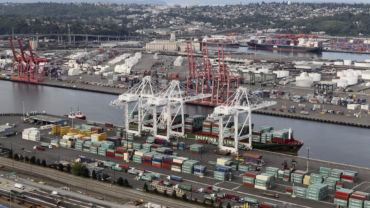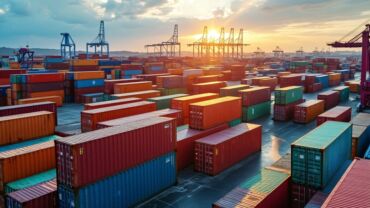One of the lesser-known aspects of digital transformation within manufacturing is supply chain traceability, which could help maximize efficiencies and even reduce carbon emissions
Digital technologies, if brought to scale, could reduce carbon emissions by up to 20% by 2050 in manufacturing across the three highest-emitting sectors (energy, materials, and mobility), according to the World Economic Forum.
“No matter if you don’t do anything else… improvements in manufacturing’s digital transformation journey drives positive around ESG [environment, social & governance] and sustainability,” says Craig Coulter, sustainability leader for global advanced manufacturing & mobility at EY.
One of the sub-components of digital transformation within manufacturing is supply chain traceability. In an increasingly complex global marketplace, traceability has emerged as a critical factor for businesses and their supply chains across industries. Companies are under mounting pressure to ensure transparency and sustainability throughout their supply chains for Scope 3 reporting across ESG issues. Technologies across supply chains have been used to maximize efficiency and to manage inventory for many years. Indeed, barcodes, radio frequency identification, global positioning system (GPS), and artificial intelligence (AI) have been in the mix for decades.
However, the demand for supply chains transparency and clean supply chains have put a new importance on these and other emerging technologies to fulfill ESG goals.
The combination of old and new technologies is one of the most cost-effective and efficient ways to track and identify products throughout a supply chain. Adding in the mobile component with the ability to track the origin of ingredients and raw materials ensures that such material comes from sustainable sources and helps to enhance supply chain traceability.
Complimenting these technologies with software enables companies to capture data at every stage of their supply chain, from raw materials to finished products, according to Robert Brice, president and chief technology officer at RFgen. This software allows for real-time tracking, monitoring, and verification of goods, enhancing supply chain transparency in the following areas of sustainability:
Waste reduction — AI capabilities help to optimize inventory levels, reducing the risk of overstocking or understocking, which can reduce waste.
Carbon footprint management — Using GPS technology enables companies to optimize transportation routes, reducing fuel consumption and greenhouse gas emissions in order to help achieve sustainability goals.
Supplier compliance — Supply chain traceability solutions enable companies to monitor and enforce supplier compliance with sustainability standards.
Consumer trust and brand reputation — End-to-end supply chain traceability provides consumers with detailed information about the products’ journey, including sourcing, manufacturing processes, and handling. This transparency can generate consumer trust.
Generative AI can revolutionize supply chain traceability
Generative AI has the potential to revolutionize supply chain traceability and fulfill clean supply chain requirements even more. “Generative AI with the functionality to consume data can be trained on the operations of an industry to drive efficiency and at the same time be compliant,” Brice explains. “A human really could not do that.”
Critical areas of transformation include:
-
-
- Data analysis and pattern recognition — Generative AI algorithms can analyze large volumes of data collected throughout the supply chain, identifying patterns and anomalies that might be challenging for humans to detect.
- Sustainable supplier selection — By analyzing a wide range of factors — including supplier certifications, environmental performance, and ethical practices — generative AI algorithms can identify suppliers that align with a company’s sustainability goals.
- Risk management and mitigation — By analyzing data from various sources such as weather conditions, geopolitical factors, and market trends, generative AI algorithms can help companies proactively identify and respond to potential disruptions.
- Life-cycle assessment and product design — By considering factors such as materials used, manufacturing processes, transportation, and end-of-life disposal, generative AI algorithms can help optimize product design to minimize environmental footprints.
-
Major barriers still hinder progress
While ensuring full transparency and accountability of supply chains is a valuable goal, there are several significant barriers standing in the way. First, companies’ ESG data is often sitting in disparate IT systems that don’t talk to each other across the value chain; second, there are many different systems within a manufacturer’s technology stack, which often include multiple enterprise resource planning systems, and differing software for inventory and production control and asset management platforms, notes Coulter.
In fact, Coulter says that he and his team worked with several clients to stitch together these systems to create a cohesive approach for efficiency, while driving improvements in ESG data collection and analysis.
For example, he says they are working with a client to implement an added layer on top of its enterprise asset management system to trace all of the assets in a given factory and across the organization. This enables the controller to extract and report on energy outputs across the client’s entire manufacturing process.
Because technology like generative AI can only improve outcomes so much, the other major challenge is communication. “It [generative AI] can only go so far based on the definition of scope that the people using it provide,” adds Coulter. “And if we don’t see improved communications within the manufacturing organization about the scope of what they need and how to implement it, the risk of failure after throwing millions of dollars at a digital project is pretty high.”







